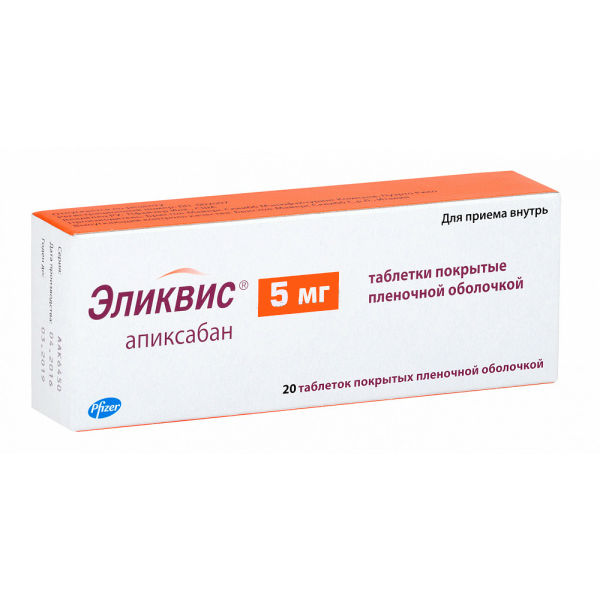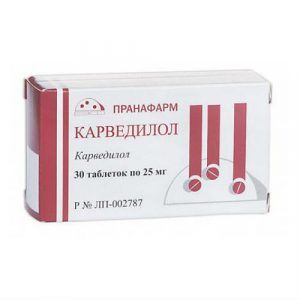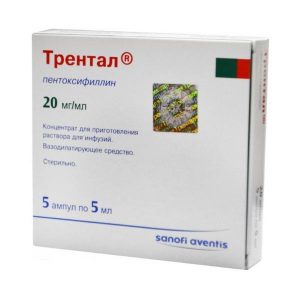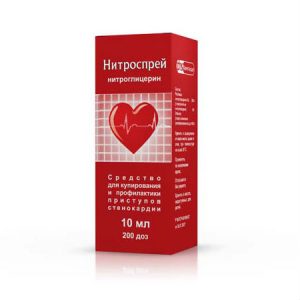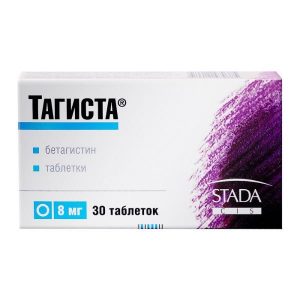Description
Release form
Tablets.
Packaging
20 pcs.
Pharmacological action
Direct-acting anticoagulant – a selective inhibitor of factor Xa blood coagulation.
The mechanism of action of apixaban is to inhibit the activity of FXa. As a result of this, apixaban changes the values of the indicators of the blood coagulation system: lengthens the prothrombin time, MHO and activated partial thromboplastin time (APTT). Changes in these indicators when using the drug in a therapeutic dose are insignificant and individual. Therefore, their use in order to assess the pharmacodynamic activity of apixaban is not recommended.
Apixaban inhibition of FXa activity was confirmed by a chromogenic test using Rotachrom heparin. The change in anti-FXa activity is directly proportional to the increase in the concentration of apixaban in blood plasma, in this case, the maximum activity values are observed upon reaching Cmax of apixaban in blood plasma. A linear relationship between the concentration and anti-FXa activity of apixaban is recorded in a wide range of therapeutic doses of the drug. Changes in anti-FXa activity with changes in dose and apixaban concentration are more pronounced and less variable than blood coagulation. The expected maximum and minimum anti-FXa activity of apixaban in equilibrium, when applied at a dose of 2.5 mg 2 times / day, is 1. 3MU / ml (5/95 percentile – 0.67 IU / ml – 2.4 IU / ml) and 0.84 IU / ml (5/95 percentile -0.37MU / ml- 1.8 IU / ml), respectively, which correlates with the fluctuations of this indicator in the interval between doses of the drug (less than 1.6 times). Against the background of apixaban therapy, routine monitoring of its concentration in blood plasma is not required, however, the Rotachrom anti-FXa activity test may be useful for deciding whether to continue therapy.
Indications
prophylaxis of venous thromboembolism in patients after planned hip or knee arthroplasty
prophylaxis of strokes, systemic thromboembolism and decreased mortality in patients with atrial fibrillation. The exception is patients with severe to moderate mitral stenosis or artificial heart valves.
Contraindications
hypersensitivity to any component of the
drug clinically significant bleeding
severe liver dysfunction
impaired renal function with Cl creatinine less than 15 ml / min, as well as use in patients dialysis
pregnancy
breastfeeding
age 18 years.
It is not recommended to simultaneously use apixaban with drugs whose action may be associated with the development of serious bleeding.
Caution: Apixaban should be used with caution in patients with moderate to mild hepatic impairment (Child-Pugh Class A or B) undergoing spinal / epidural anesthesia or spinal / epidural puncture (see “Special Instructions”) for patients receiving systemic therapy with potent inhibitors of the CYP3A4 isoenzyme and P-glycoprotein, such as azole antifungal agents (in particular ketoconazole, itraconazole, voriconazole and posaconazole), HIV protease inhibitors (for example ritonavir) when using apixaban with powerful inducers of the isoenzyme CYP3A4 and P-glycoprotein (in particular rifampicin, phenytoin, carbamazepine, phenobarbital or St. John’s wort perforated).
Use during pregnancy and lactation
There is only limited information on the use of Elikvis during pregnancy. The use of apixaban during pregnancy is not recommended.
There is no information on the excretion of apixaban or its metabolites with human milk. If it is necessary to use the drug Elikvis during lactation, breastfeeding should be discontinued.
Special instructions
In patients with atrial fibrillation and conditions requiring monotherapy or combination therapy with two antiplatelet agents, a careful assessment of the benefit / risk ratio should be carried out before starting concurrent use with Elikvis.
Elikvis is not recommended for use in patients with liver disease, accompanied by disorders in the blood coagulation system and a clinically significant risk of bleeding.
It was shown that in patients at high risk after acute coronary syndrome, with the presence of multiple cardiac and non-cardiac concomitant diseases, there was a significant increase in the risk of bleeding with the combined use of apixaban and acetylsalicylic acid or a combination of acetylsalicylic acid and clopidogrel compared to placebo.
As with other anticoagulants, careful monitoring of patients taking Elikvis is necessary for bleeding. With the development of severe bleeding, the drug Elikvis should be discontinued.
With the development of hemorrhagic complications, it is necessary to cancel treatment with the drug and perform an examination to determine the source of bleeding. If necessary, appropriate treatment is prescribed, in particular surgical stopping of bleeding or transfusion of freshly frozen blood plasma.
Cancellation of anticoagulant therapy, incl. apixaban, with active bleeding before elective surgery or an invasive procedure, can lead to an increased risk of thrombosis. Avoid prolonged cessation of therapy and, if it is necessary to temporarily discontinue apixaban therapy, then it must be resumed as soon as possible.
Performing spinal, epidural anesthesia or puncture in patients receiving Elkvis
When performing spinal or epidural anesthesia or diagnostic puncture of these areas in patients receiving antithrombotic agents to prevent thromboembolism, there is a risk of developing epidural or spinal hematomas, which, in turn, can cause persistent or irreversible paralysis. This risk may increase even more with the use of an installed epidural catheter in the postoperative period or with the parallel use of other drugs that affect hemostasis. Installed epidural or subarachnoid catheters should be removed at least 5 hours before the first dose of Elikvis. A similar increase in risk can be observed when performing traumatic or multiple punctures of the epidural or subarachnoid spaces. Frequent monitoring of patients is necessary for the development of manifestations of disorders of the nervous system (in particular, numbness or weakness of the lower extremities, impaired bowel or bladder function).
In the development of such disorders, an emergency examination and treatment is necessary. Before performing interventions on epidural or subarachnoid spaces in patients receiving anticoagulants, including in order to prevent thrombosis, an assessment of the ratio of potential benefits and risks is necessary.
Effect on the ability to drive vehicles and work with other mechanisms. Elikvis does not have a significant impact on the ability to drive a car and work with mechanisms.
Composition
1 tablet contains 5 mg apixaban.
excipients: lactose – 100.5 mg MCC – 82 mg croscarmellose sodium – 8 mg sodium lauryl sulfate – 2 mg magnesium stearate – 2.5 mg
film sheath: Opadry II yellow / pink (hypromellose 15 cps – 2.96 mg, lactose monohydrate – 2.48 mg, titanium dioxide – 1.87 mg, triacetin – 0.64 mg, iron dye red oxide – 0.046 mg) – 8 mg
Dosage and administration
Inside, regardless of food intake.
If you miss a dose, you should take the drug as soon as possible, and continue to take it 2 times a day in accordance with the original scheme.
In patients after planned endoprosthetics of the hip or knee joint: 1 tab. 2.5 mg 2 times a day (first dose 12-24 hours after surgery).
In patients undergoing hip replacement, the recommended duration of therapy is 32 38 days, of the knee – 10-14 days.
In patients with atrial fibrillation: 1 tab. 5 mg 2 times a day.
Special patient groups
1. Patients with atrial fibrillation in combination with two or more of the following characteristics – age over 80 years, body weight less than 60 kg, or plasma creatinine concentration? 1.5 mg / dl (133 μmol / L) – the recommended dose of the drug Elikvis is reduced to 1 table. 2.5 mg 2 times a day.
2. Patients with impaired renal function. In case of impaired renal function of mild, moderate or severe degree with a decrease in Cl creatinine to 15 ml / min, dose adjustment of apixaban is not required (the exception is the patients indicated in paragraph 1). In patients with severe renal impairment with Cl creatinine less than 15 ml / min, as well as in patients being on dialysis, the use of the drug Elikvis is not recommended.
3. Patients with impaired liver function. Caution should be exercised when taking Elikvis in patients with mild to moderate hepatic insufficiency (class A or B according to the Child-Pugh classification), with no dose adjustment required. The use of the drug in patients with severe hepatic insufficiency is not recommended.
4. Elderly patients. Correction of the dose of the drug in elderly patients is not required (the exception is the patients indicated in paragraph 1).
5. Body weight. Dose adjustment depending on the patient s body weight is not required (the exception is the patients specified in paragraph 1).
6. Paul No dose adjustment depending on the patient s gender is required.
7. Race and ethnicity. Correction of the dose of the drug depending on the race or ethnic origin of the patient is not required.
Switching from or to parenteral anticoagulant therapy
Switching from parenteral anticoagulants to Elikvis and vice versa can be done at the time of the next scheduled administration of the drug being canceled (the next dose of the drug being canceled is not taken).
Switching from or to warfarin or other vitamin K antagonists
Transfer patients with warfarin or other vitamin K antagonists to therapy with Elikvis ® should be performed with an INR value of less than 2 in a patient.
When transferring patients with therapy with Elikvis ® to warfarin or other vitamin K antagonists, continue therapy with Elikvis for 48 hours after taking the first dose of warfarin or other vitamin K antagonists.
Surgical and invasive procedures
Elikvis should be canceled after 2-3 days before a planned operation or invasive procedure. In case it is impossible to postpone the procedure, special care should be taken, given the increased risk of bleeding. You should also evaluate the ratio of the risks of bleeding and the delay of surgery.
Side effects of
By the frequency of side reactions is understood: often -? 1/100,
Prevention of venous thromboembolism in patients after planned hip or knee arthroplasty
Adverse reactions were observed in 11% of patients receiving 2.5 mg apixaban 2 times a day. As with other anticoagulants, bleeding can occur in patients with risk factors, such as organic lesions, which may be accompanied by bleeding. The most common side effects were anemia, bleeding, bruising, and nausea. Adverse reactions that developed in patients undergoing orthopedic surgery during treatment with apixaban are presented below.
On the part of the blood and lymphatic system: often – anemia (including postoperative and posthemorrhagic, accompanied by corresponding changes in the results of laboratory tests), bleeding (including hematoma, vaginal and urethral bleeding) infrequently – thrombocytopenia (including a decrease in platelet count).
On the part of the immune system: rarely – hypersensitivity.
From the side of the organ of vision: rarely – hemorrhage in the tissue of the eyeball (including hemorrhage in the conjunctiva).
From the CCC side: infrequently – arterial hypotension (including hypotension during the procedure).
From the respiratory system: infrequently – nosebleeds rarely – hemoptysis.
From the gastrointestinal tract: often – nausea infrequently – gastrointestinal bleeding (including vomiting mixed with blood and melena), the presence of unchanged blood in the feces rarely – rectal bleeding, bleeding from the gums.
From the liver and biliary tract: infrequently – increased activity of transaminases, incl. increased ALT activity, AST, GGTP, pathological changes in functional liver samples, increased activity of alkaline phosphatase in the blood, increased bilirubin concentration in the blood.
From the musculoskeletal system: rarely – muscle hemorrhage.
From the urinary system: infrequently – hematuria (including the corresponding changes in the results of laboratory tests).
Other: often – closed trauma infrequently – hemorrhages and bleeding after invasive procedures (including hematoma after the procedure, bleeding from the postoperative wound, hematoma in the area of the puncture of the vessel and at the site of the catheter installation), the presence of discharge from the wound, hemorrhage in incision area (including hematoma in the incision area), bleeding during surgery.
Prevention of strokes and systemic embolism in patients with atrial fibrillation
From the immune system: infrequently – hypersensitivity (including drug hypersensitivity reactions such as skin rash and anaphylactic reactions, allergic edema).
From the nervous system: infrequently – intracranial hemorrhage, subarachnoid hemorrhage, subdural hematoma, hemorrhage in the spinal canal, spinal hematoma.
From the side of the organ of vision: often – hemorrhages in the tissue of the eyeball (including hemorrhage in the conjunctiva).
From the CCC: often – other types of bleeding, hematomas infrequently – bleeding in the abdominal cavity.
From the respiratory system: often – epistaxis infrequently – hemoptysis rarely – bleeding in the respiratory system (including pulmonary alveolar bleeding, laryngeal and pharyngeal bleeding).
From the gastrointestinal tract: often – gastrointestinal bleeding (including vomiting mixed with blood and melena), rectal bleeding, bleeding from the gums infrequently – hemorrhoidal bleeding, the presence of unchanged blood in the feces, bleeding in the oral cavity rarely – retroperitoneal hemorrhage .
From the urinary system: often – hematuria.
From the reproductive system: infrequently – intermenstrual vaginal bleeding, urogenital bleeding.
Reactions at the injection site: infrequently – bleeding at the injection site.
Laboratory indicators: infrequently – a positive reaction in the analysis of feces for occult blood.
Other: often – closed injury infrequently – traumatic bleeding, bleeding after the procedure, hemorrhage in the incision area.
Drug interaction
Effect of other drugs on the pharmacokinetics of apixaban
Inhibitors of CYP3A4 and P-glycoprotein. The combination of apixaban with ketoconazole (at a dose of 400 mg, 1 time per day), which is a powerful inhibitor of both the CYP3A4 isoenzyme and P-glycoprotein, increased the average AUC of apixaban by 2 times and the average Cmax by 1.6 times. A dose adjustment of apixaban when combined with ketoconazole is not required, however, apixaban should be used with caution in patients receiving systemic therapy with azole antifungal agents, in particular ketoconazole, or other powerful inhibitors of the isoenzyme CYP3A4 and P-glycoprotein.
Drugs not related to potent inhibitors of the CYP3A4 isoenzyme and P-glycoprotein (e.g. diltiazem, naproxen, amiodarone, verapamil, quinidine) are likely to lead to an increase in the concentration of apixaban in the blood plasma to a lesser extent. For example, diltiazem (a moderate inhibitor of the CYP3A4 isoenzyme and a weak P-glycoprotein inhibitor) at a dose of 360 mg once a day led to an increase in the average AUC of apixaban by 1.4 times and the average Cmax by 1.3 times. Naproxen (an inhibitor of P-glycoprotein) when applied at a dose of 500 mg in healthy volunteers caused an increase in the average values of AUC and Cmax of apixaban in 1, 5 and 1.6 times, respectively. At the same time, an increase in the values of the indicators of the blood coagulation system (PV, INR and APTT) was noted. However, no effect of naproxen on arachidonic acid-induced platelet aggregation, nor a clinically significant prolongation of bleeding time, were observed.
Dose adjustment of apixaban when combined with moderate inhibitors of the CYP3A4 isoenzyme and / or P-glycoprotein is not required.
Inductors of the isoenzyme CYP3A4 and P-glycoprotein. The combination of apixaban with rifampicin (a powerful inducer of the isoenzyme CYP3A4 and P-glycoprotein) led to a decrease in the average AUC and Cmax of apixaban by approximately 54 and 42%, respectively. Apparently, the combination of apixaban with other powerful inducers of the isoenzyme CYP3A4 and P-glycoprotein (in particular phenytoin, carbamazepine, phenobarbital or hypericum perforatum preparations) can also lead to a decrease in the concentration of apixaban in blood plasma. Correction of the dose of apixaban when it is combined with the agents of this group is not required, however, these agents should be combined with caution.
Anticoagulants, platelet aggregation inhibitors and NSAIDs. After co-administration of enoxaparin (once, at a dose of 40 mg) and apixaban (once, at a dose of 5 mg), the additive effect of these drugs on FXa activity was noted.
There were no signs of pharmacokinetic or pharmacodynamic interaction of apixaban with acetylsalicylic acid (at a dose of 325 mg, 1 time per day) in healthy people.
Combination of apixaban with clopidogrel (at a dose of 75 mg, 1 time per day) or a combination of clopidogrel (75 mg) and acetylsalicylic acid (162 mg, 1 time per day) in phase I of the clinical study did not lead to an increase in bleeding time or further inhibition of platelet aggregation compared with the use of these antiplatelet agents in monotherapy. An increase in the indicators of the blood coagulation system (PV, INR, and APTT) corresponded to the effects of apixaban when used in monotherapy.
It is not recommended to simultaneously use drugs whose effect may be associated with the development of serious bleeding, such as unfractionated heparin or heparin derivatives (including low molecular weight heparins), FXa inhibiting oligosaccharides (e.g. fondaparinux), direct thrombin II inhibitors (e.g. desirudin), thrombolytic drugs , IIb / IIIa glycoprotein receptor antagonists, dipyridamole, dextran, sulfinpyrazone, vitamin K antagonists and other oral anticoagulants. It should be noted that unfractionated heparin can be used in doses necessary to support patency of the central venous or arterial catheter.
In patients after elective hip or knee replacement, co-administration of apixaban with other antiplatelet agents or antithrombotic drugs is not recommended.
Combination with other medicines. No clinically significant pharmacokinetic or pharmacodynamic interaction of apixaban with atenolol or famotidine has been identified.
The combination of apixaban (at a dose of 10 mg) with atenolol (at a dose of 100 mg) did not lead to the development of clinically significant changes in the pharmacokinetics of apixaban, however, it was accompanied by a decrease in the average values of AUC and Cmax of apixaban by 15 and 18%, respectively, compared with the monotherapy regimen. The administration of apixaban (at a dose of 10 mg) with famotidine (at a dose of 40 mg) did not affect the AUC or Cmax values of apixaban.
Effect of apixaban on the pharmacokinetics of other drugs
In in vitro studies, apixaban did not inhibit the activity of the isoenzymes CYP1A2, CYP2A6, CYP2B6, CYP2C8, CYP2C9, CYP2D6 or CYP3A4 (inhibitory concentration (IC50) slightly less than 45 μm) the activity of the CYP2C19 isoenzyme (IC50> 20 μmol / L) in a concentration significantly higher than the Cmax of the drug in blood plasma during its clinical use. Apixaban is not an inducer of isoenzymes CYP1A2, CYP2B6, CYP3A4 / 5 in concentrations up to 20 μmol / L. In this regard, it is expected that when used together, it will not affect the clearance of drugs metabolized by these isoenzymes. In addition, apixaban does not significantly inhibit the activity of P-glycoprotein. In studies in healthy volunteers, apixaban did not significantly alter the pharmacokinetics of digoxin, naproxen, or atenolol.
Overdose
Symptoms: Increased risk of bleeding. In controlled clinical trials, apixaban was taken orally by healthy volunteers at doses up to 50 mg / day for 3 7 days (25 mg, 2 times daily for 7 days or 50 mg, 1 time for 3 days) for clinically relevant patients. there were no undesirable effects.
Treatment: Activated carbon can be considered. The antidote of the drug is unknown.
Storage conditions
At a temperature not exceeding 30 ° C.
Shelf life
3 years.
Deystvuyushtee substance
apixaban
Terms and conditions
prescription
dosage form
tablets
Prescription
Prescription
Adults prescribed by a doctor
Bristol-Myers Squibb Menyufekchuring Company, USA
